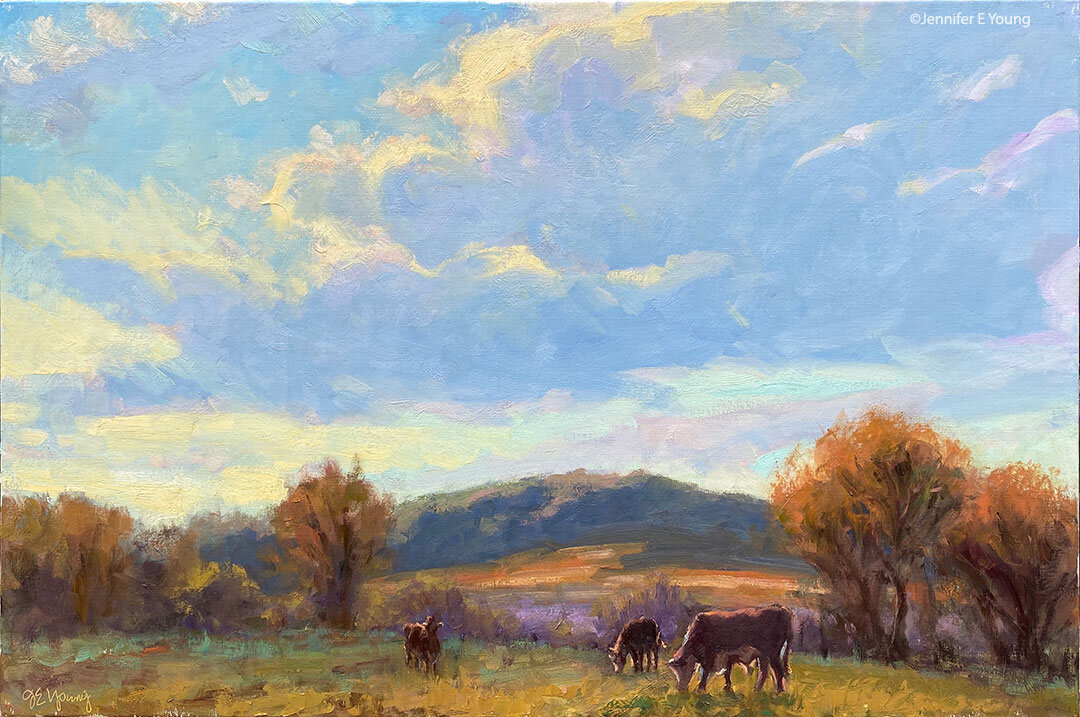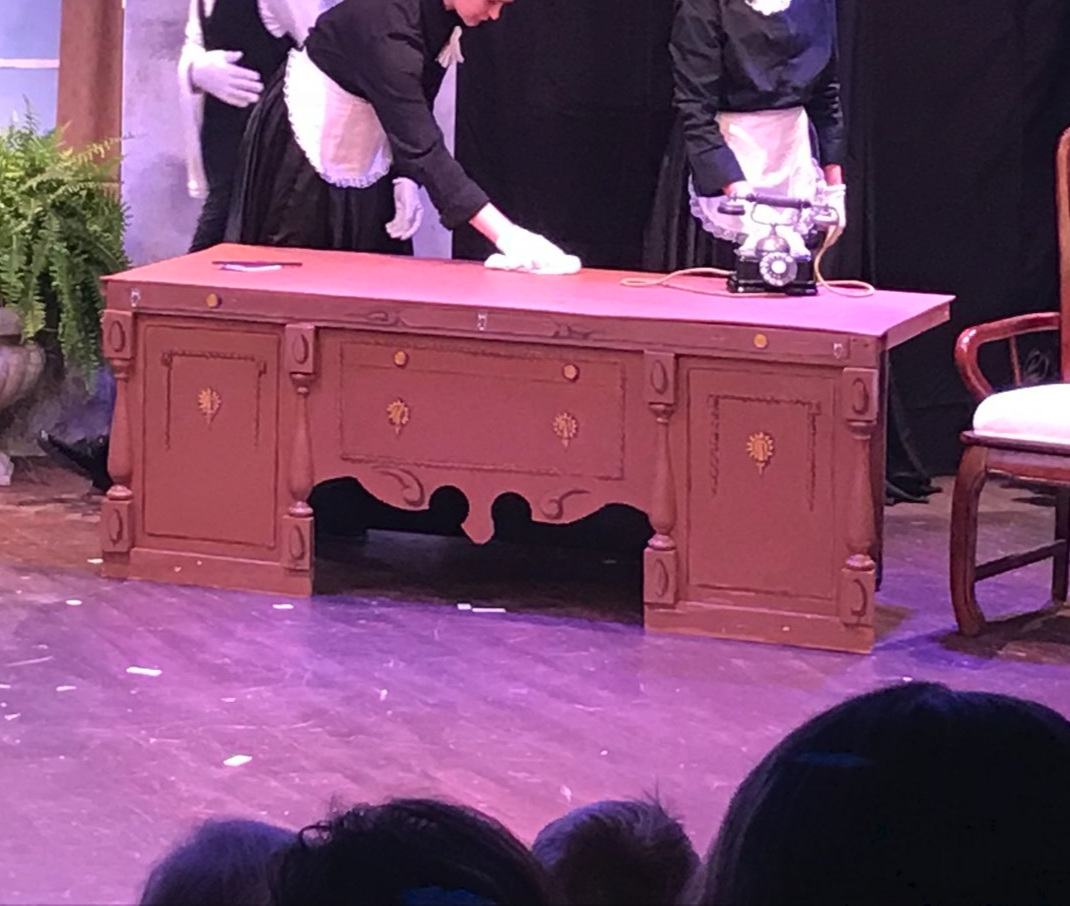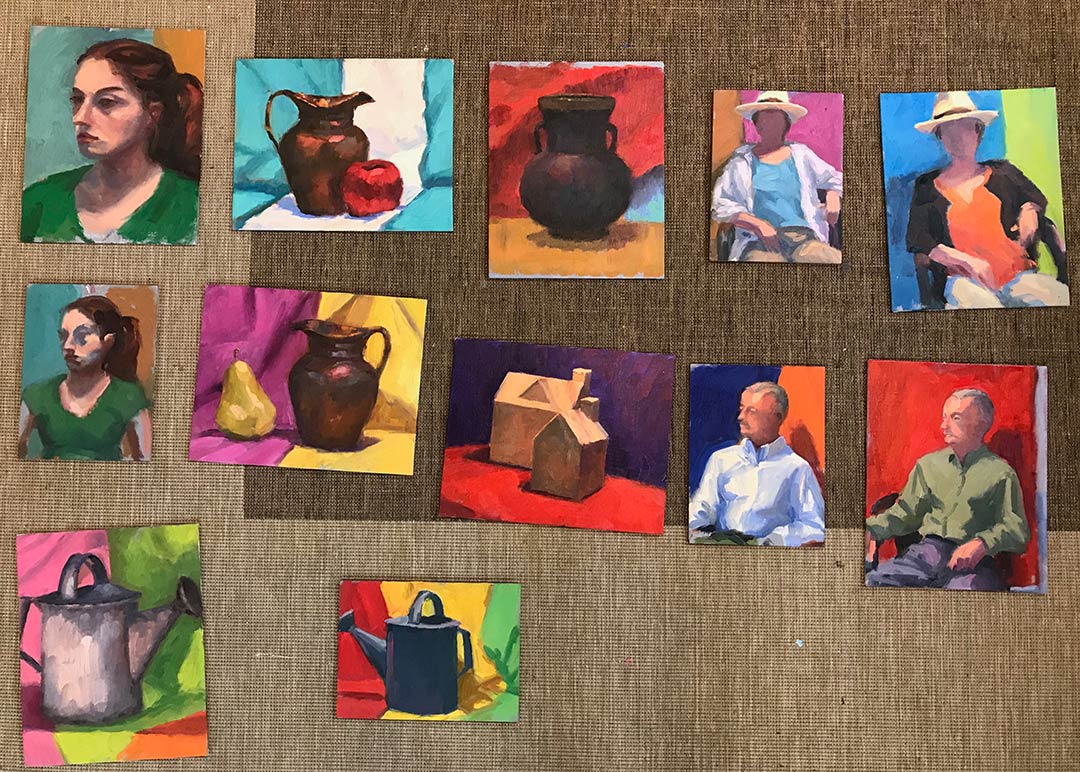Mini taboret, palette and art caddy
/I made mention the other day about my home made mini taboret that I devised (with the help of my husband's handiwork!) Here it is:


I use this as my color mixing palette and as a holder for a few of my essentials- my oil paints, any medium, paint thinner and paper towels, etc. The main structure is actually this laundry caddy, that is meant to slide in between a washing machine and drier.
The goal in my search for the perfect cart was to find something ready made that I could use directly in front of my easel as a palette area to mix my paints.
I figured if I didn't want to bend over or reach out too far to get to my canvas, I'd like something no more than 12 inches deep, and at the right height so that I could comfortably mix my paints without having to stoop. I also wanted something on wheels, so that I could roll the cart to the side if I were painting a very large painting.
What I came up with was this art caddy. The caddy required minimal assembly and was only around 8 or 9 inches deep. I'm not a tall person, but still the cart wasn't quite tall enough for me. This is where the handiwork came in. My husband told me to determine how much higher I'd need the top to be in order to comfortably mix my paints. Once this was determined, he built up the height by engineering a little insert cut from two by fours. Then he attached a 12"deep x 36" long board (a shelf left over from an old IKEA bookcase) on top of his insert. Sitting atop this board, I have3 12x12" ceramic tiles. This is my paint mixing area. The tiles are backed with velcro so that if I get very vigorous with my mixing they won't slide around. I'm not great with cleaning my palette thoroughly, but the great thing is these tiles are cheap and easily found at any Lowe's or Home Depot. If they get too dirty then it is easy enough and inexpensive enough to change them out. A very handy person could probably easily construct the whole caddy from scratch, but being short on time and patience, this cart works for me! And was far cheaper than anything I had looked at that was comercially produced.
Care needs to be taken when moving the cart. In other words, you can't whip it around very quickly as it is slightly top heavy. This is mostly remedied by putting heavy things (like cans of thinner) on the bottom shelf. I used a simple bungee cord strung from one side handle to the other to hold my paper towels, and the baskets are ones I found at the dollar store.
A taller person might require a taller cart (I'm 5'4 1/2" tall) so you'd really need to measure everything to make sure this is the solution for you. There are also expensive easels that actually have tiles along the front part of the easel, and this is another option if you want a complete system. However, I rather like having the cart/palette separate as it is a little more flexible for me to have something that is freestanding.














